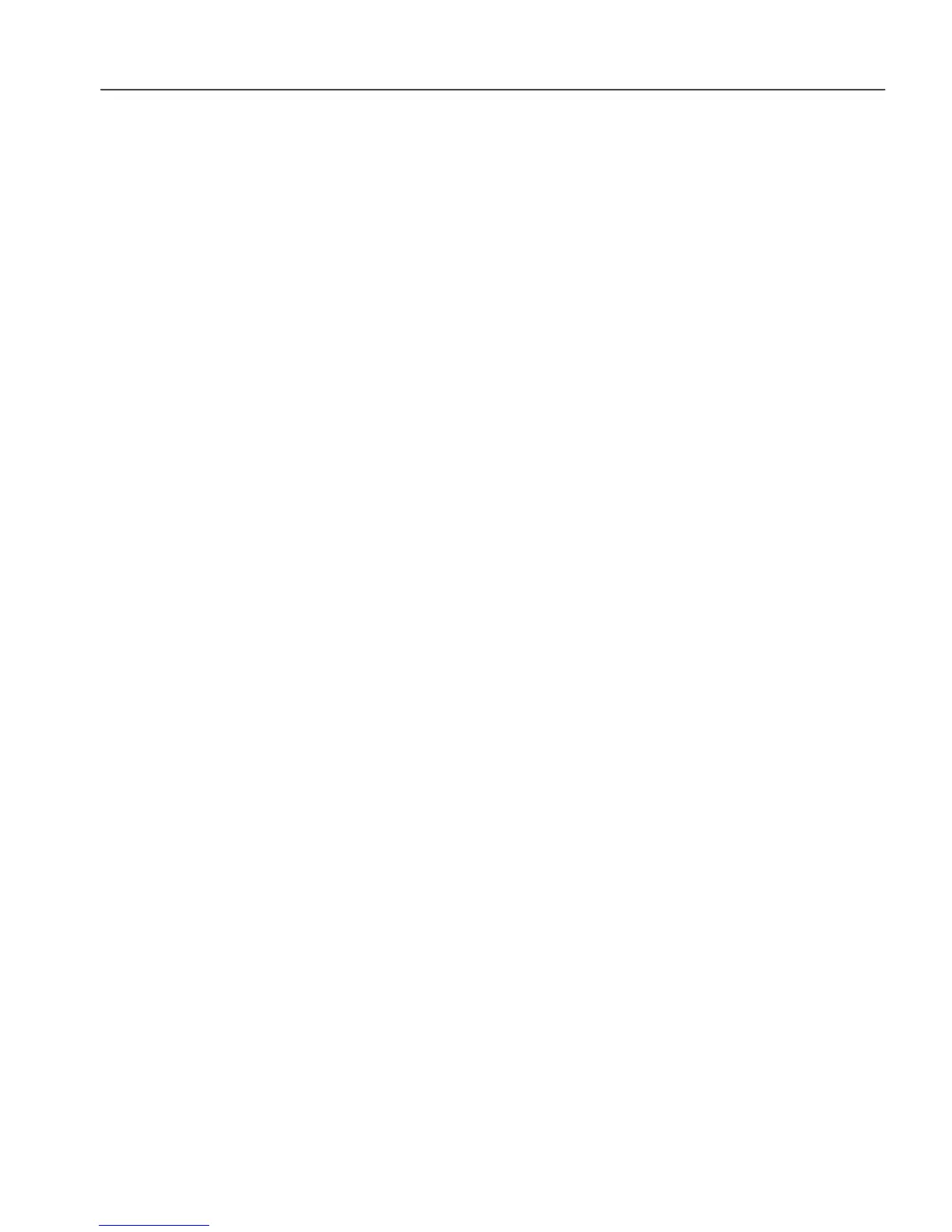Chapter 6, COMPUTER OPERATION
6-25
CBD [n] Curve buffer define for Standard Mode Buffer
Defines which data outputs are stored in the standard curve buffer when subsequent
TD (take data), TDT (take data triggered) or TDC (take data continuously)
commands are issued. Up to 17 (or 22 in dual reference and dual harmonic modes)
curves, or outputs, may be acquired, as specified by the CBD parameter.
The CBD parameter is an integer between 1 and 131,071, being the decimal
equivalent of a 17-bit binary word. In either of the dual reference modes, it is an
integer between 1 and 4,194,303, being the decimal equivalent of a 22-bit binary
number. When a given bit is asserted, the corresponding output is selected for
storage. When a bit is negated, the output is not stored. The bit function and range
for each output are shown in the table below:
Bit Decimal value Output and range
0* 1 X Output (±10000 FS)
1* 2 Y Output (±10000 FS)
2* 4 Magnitude Output (0 to +10000 FS)
3* 8 Phase (±18000 = ±180°)
4 16 Sensitivity setting (1 to 27) + IMODE (0, 1, 2, 3 =
0, 32, 64, 128)
5* 32 Noise (0 to +10000 FS)
6* 64 Ratio (±10000 FS)
7* 128 Log ratio (-3000 to +2000)
8* 256 ADC1 (±10000 = ±10.0 V)
9* 512 ADC2 (±10000 = ±10.0 V)
10* 1024 ADC3 (±10000 = ±10.0 V)
11* 2048 ADC4 (±10000 = ±10.0 V)
12* 4096 DAC1 (±10000 = ±10.0 V)
13* 8192 DAC2 (±10000 = ±10.0 V)
14 16384 EVENT variable (0 to 32767)
15 32768 Reference Frequency bits 0 to 15 (millihertz)
16 65536 Reference frequency bits 16 to 31 (millihertz)
Dual modes only:-
Bit Decimal value Output and range
17* 131072 X
2
Output (±10000 FS)
18* 262144 Y
2
Output (±10000 FS)
19* 524288 Magnitude2 Output (0 to +10000 FS)
20* 1048576 Phase
2
Output (±18000 = ±180°)
21 2097152 Sensitivity
2
setting (1 to 27) + IMODE
(0, 1, 2 = 0, 32, 64)
100,000 points are available for data storage in the standard curve buffer mode,,
shared equally between the specified curves. For example, if 16 outputs are stored
then the maximum number of storage points would be 6250 (i.e. 100000/16). The
only exception to this rule is that the Frequency curve (curves 15 and 16) occupies
the equivalent of any two other curves. The LEN command sets the actual curve
length, which cannot therefore be longer than 100000 divided by the number of
curves selected. If more curves are requested than can be stored with the current
buffer length, then the buffer length will be automatically reduced. Its actual length
can of course be determined by sending the LEN command without a parameter.
The reason why bit 4 and, for dual reference modes, bit 21, which store both the

